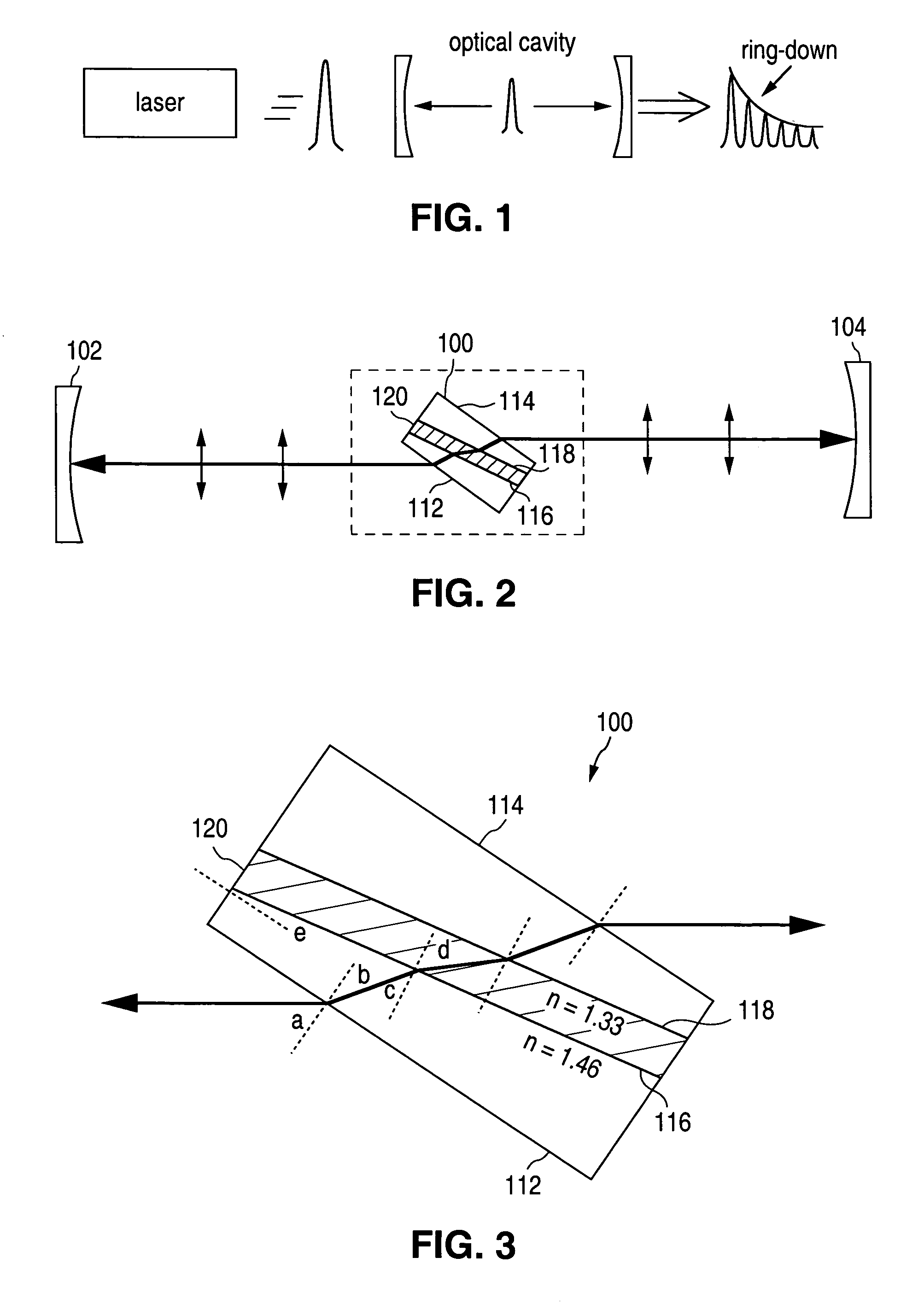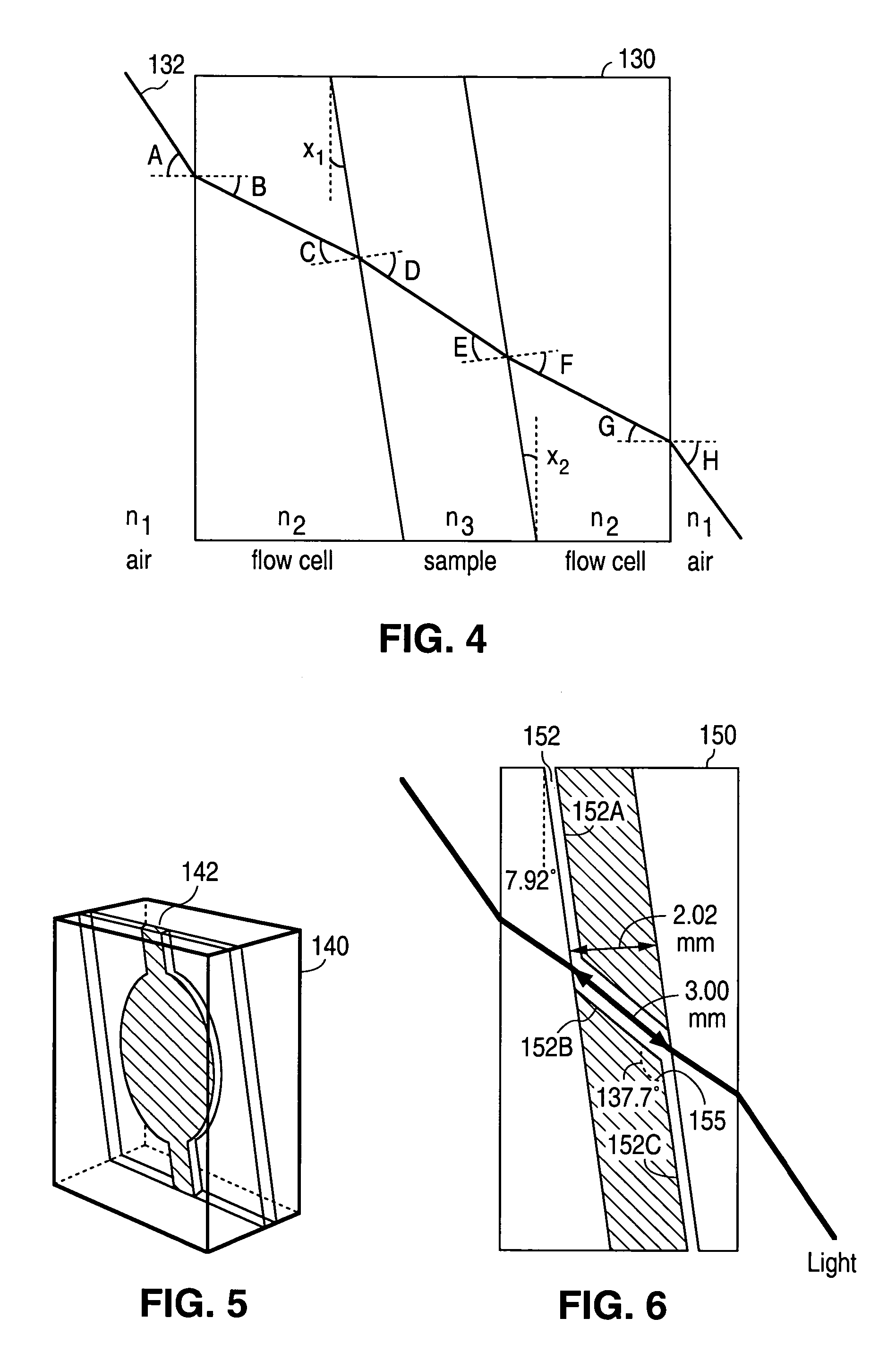Brewster's angle flow cell for cavity ring-down spectroscopy
a flow cell and cavity technology, applied in the field of spectroscopic analysis, can solve the problems of reducing the advantage of traditional uv-vis absorption detectors, small difference between two relatively large signals being measured, etc., and achieve the effect of facilitating the measurement of light absorption
- Summary
- Abstract
- Description
- Claims
- Application Information
AI Technical Summary
Benefits of technology
Problems solved by technology
Method used
Image
Examples
Embodiment Construction
[0030]In accordance with the principles of the present invention, a container to be positioned in a ring-down optical cavity for containing a sample to be analyzed includes outer faces and inner faces oriented such that light impinging on each interface of the container is at an incidence angle equal to the Brewster's angle of the interface. The container of the present invention is also referred to as a “Brewster's angle flow cell” and can be used to contain a static or a flowing liquid sample, a non-rigid solid sample or a gaseous sample. By ensuring that light incident upon and exiting each interface of the container is at the Brewster's angle of the interface, reflections of light at each interface are substantially minimized as the light travels through the container and the sample contained therein. In this manner, the container of the present invention can be placed in a ring-down optical cavity for performing cavity ring-down spectroscopy (CRDS) for liquid, gaseous, or solid...
PUM
| Property | Measurement | Unit |
|---|---|---|
| wavelength range | aaaaa | aaaaa |
| refractive index | aaaaa | aaaaa |
| time constant | aaaaa | aaaaa |
Abstract
Description
Claims
Application Information
 Login to View More
Login to View More - R&D
- Intellectual Property
- Life Sciences
- Materials
- Tech Scout
- Unparalleled Data Quality
- Higher Quality Content
- 60% Fewer Hallucinations
Browse by: Latest US Patents, China's latest patents, Technical Efficacy Thesaurus, Application Domain, Technology Topic, Popular Technical Reports.
© 2025 PatSnap. All rights reserved.Legal|Privacy policy|Modern Slavery Act Transparency Statement|Sitemap|About US| Contact US: help@patsnap.com



